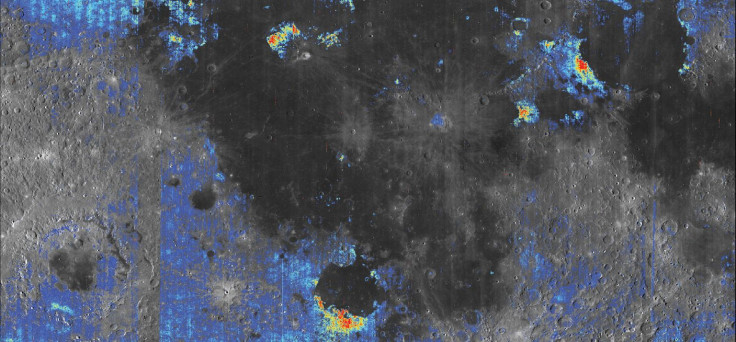Life On The Moon? Researchers Say Aliens Could Have Lived There Once

The idea of life on a surface other than Earth has long fascinated the human mind, and the search for it — or even its existence in the past — has taken our spacecraft and research to distant reaches of the solar system as well as much farther beyond. However, it turns out we may find evidence of the existence of past life on the closest large object to Earth — our own moon.
There may have been not one but two distinct windows of time in the ancient past when conditions were right for the moon to host life on its surface, a study published Monday claims. According to Dirk Schulze-Makuch, an astrobiologist at Washington State University, and Ian Crawford, a professor of planetary science and astrobiology at the University of London, the moon could have supported life soon after its formation from a debris disk about 4 billion years ago, and then again about half a billion years later, when lunar volcanic activity was at a peak.
“If liquid water and a significant atmosphere were present on the early Moon for long periods of time, we think the lunar surface would have been at least transiently habitable,” Schulze-Makuch said in a statement Monday.
The researchers think these two conditions — liquid water and significant atmosphere — were both met during the periods they theorize about, saying both those times saw large amounts of superheated volatile gases being spewed out from the moon’s interior, gases that included water vapor. That would form pools of liquid water on the surface, which would be protected by the resultant dense atmosphere for millions of years. At the time, the moon also likely had a significant magnetic field that protected its surface life-forms from the negative effects of solar wind.

The life forms themselves would have likely been brought to the moon’s surface by a meteorite, a theory that is also sometimes used to explain the beginnings of life on Earth. Or, if life evolved here on Earth from nothing at all, the same thing could have happened on the lunar surface too, the researchers said. It could also have reached there in the form of cyanobacteria from Earth, if a meteorite carrying it blasted off Earth’s surface and landed on the moon.
Cyanobacteria are the oldest known life on Earth, and their earliest fossils have been dated to between 3.5 and 3.8 billion years old. At that time, massive meteorite impacts were common in the solar system.
“It looks very much like the Moon was habitable at this time. There could have actually been microbes thriving in water pools on the Moon until the surface became dry and dead,” Schulze-Makuch said in the statement.
The researchers’ work was based on findings made by recent space missions, as well as careful analyses of samples of lunar rock and soil that show the moon isn’t as arid as was once believed. Large amounts of water ice has been found on the moon, and there is also strong evidence for the existence of large quantities of water in the moon’s mantle.
The theory is outlined in a paper that appeared online Monday in the journal Astrobiology.
© Copyright IBTimes 2025. All rights reserved.





















